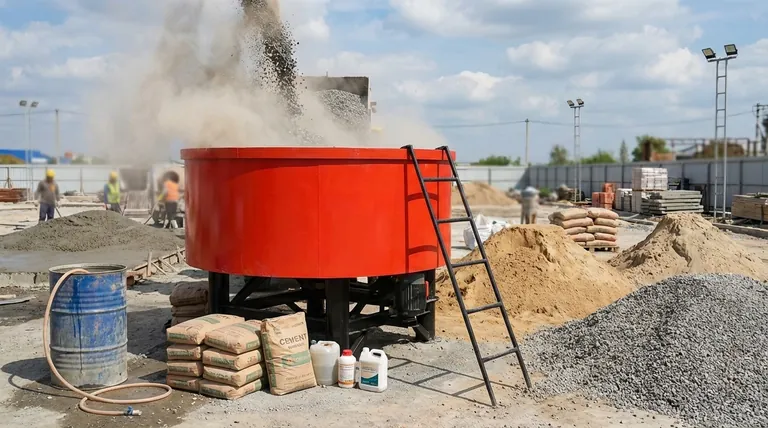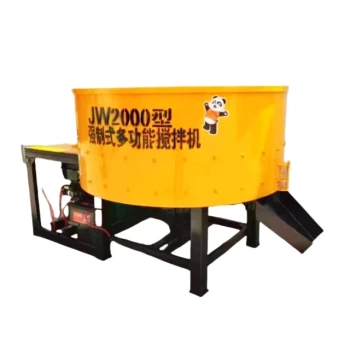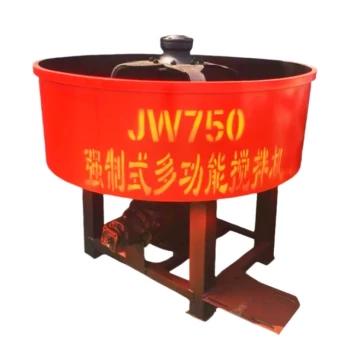At its core, cement is a binder that is rarely used alone. To create durable, strong materials like concrete or mortar, cement must be mixed with water, aggregates (such as sand and gravel), and often chemical admixtures or supplementary materials like fly ash.
The key is to understand that you are not just adding filler to cement. You are creating a complex composite material where each ingredient—water, aggregates, and additives—plays a precise role in determining the final product's strength, workability, and longevity.

The Fundamental Ingredients of a Mix
Cement acts as the glue, but the other components provide the substance and determine the performance characteristics of the final material.
Water: The Activator
Water is the essential catalyst in the mix. It initiates a chemical reaction with the cement powder called hydration, which is the process that forms the hard, crystalline matrix that binds everything together.
The amount of water used is the most critical factor for strength. This is measured by the water-cement ratio.
Aggregates: The Structural Filler
Aggregates are the inert granular materials, like sand and gravel, that make up the bulk of the concrete's volume. They are not just filler; they are the primary source of the material's strength and stability.
Well-graded aggregates, with a mix of different sizes, reduce the voids in the concrete, creating a denser and stronger final product.
Admixtures: The Performance Enhancers
Admixtures are chemical compounds added to the mix in small quantities to modify its properties. They can be used to accelerate or retard setting time, improve workability without adding more water, or increase resistance to freezing and thawing.
These are specialized ingredients used to solve specific challenges or achieve higher performance standards.
Fly Ash & Slag: The Sustainability Boost
These materials, often byproducts of industrial processes, are known as supplementary cementitious materials (SCMs). They can be used to replace a portion of the cement in a mix.
Using SCMs can enhance the long-term strength and durability of the concrete, reduce its environmental footprint, and often lower costs.
Understanding the Critical Trade-offs
The quality of your final product depends entirely on balancing the proportions of these ingredients. Misunderstanding these trade-offs is the most common source of failure.
The Water-Cement Ratio Dilemma
The single most important trade-off is between workability and strength. Adding more water makes the mix flow easier and is simpler to pour and finish.
However, every drop of extra water beyond what is needed for hydration significantly reduces the final strength and durability of the concrete. A low water-cement ratio produces strong, dense concrete, while a high ratio produces weaker, more porous concrete.
The Cost vs. Performance of Additives
Admixtures and SCMs can solve many problems, but they add complexity and cost to the mix.
You must weigh the benefit—such as the ability to pour in cold weather or achieve ultra-high strength—against the added material cost and the need for more precise quality control.
Matching Your Mix to Your Project
Your project's specific requirements should dictate your mix design.
- If your primary focus is maximum strength: Prioritize a low water-cement ratio and use high-quality, well-graded aggregates.
- If your primary focus is workability (ease of pouring): A slightly higher water-cement ratio or a water-reducing admixture is the correct approach, but you must accept the corresponding reduction in strength.
- If your primary focus is long-term durability or sustainability: Incorporating supplementary materials like fly ash or slag is an excellent strategy.
By understanding the distinct role of each component, you move from simply mixing ingredients to engineering a material for a specific purpose.
Summary Table:
| Ingredient | Role in the Mix | Key Consideration |
|---|---|---|
| Water | Activates cement (hydration) | Water-cement ratio is critical for final strength |
| Aggregates (Sand, Gravel) | Provides bulk and structural strength | Use well-graded sizes for a denser mix |
| Admixtures | Enhances specific properties (workability, setting time) | Adds cost but solves specific challenges |
| SCMs (Fly Ash, Slag) | Improves durability and sustainability | Can replace a portion of cement |
Need a reliable concrete mixer for your next project? GARLWAY specializes in providing robust construction machinery, including concrete mixers and batching plants, for contractors and construction companies worldwide. Our equipment is engineered to help you achieve the perfect mix, ensuring maximum strength and durability on every job. Contact our experts today to find the right solution for your needs!
Visual Guide

Related Products
- Auto Concrete Cement Mixer Machine New
- Concrete Cement Mixer Machine Drum Mixer for Construction
- JZC1000 Industrial Concrete Mixer Machine Cement Mixer Price
- Ready Mixer Machine for Construction Ready Mix Machinery
- Portable Electric Concrete Mixer Machine for Cement Mixing
People Also Ask
- Can you mix self leveling concrete in a cement mixer? Avoid Costly Flooring Mistakes
- How to choose the right concrete mix? A Guide to Balancing Strength, Workability, and Cost
- How long does it take to mix concrete in a portable mixer? Master the 60-Minute Rule
- What are the 4 classifications of concrete mix? Choose the Right Mix for Your Project's Success
- Can you mix mortar in a cement mixer? Avoid weak joints and project failure.



















